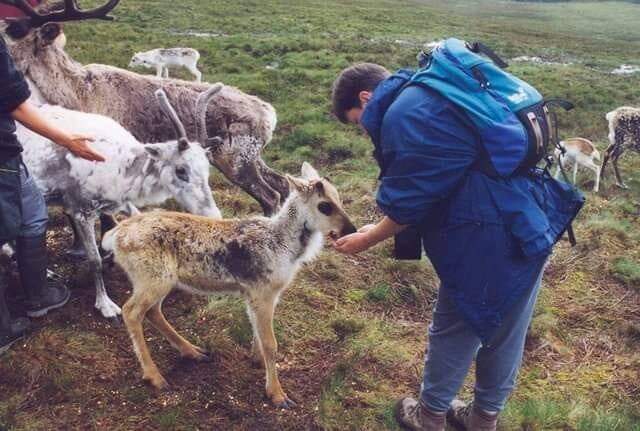
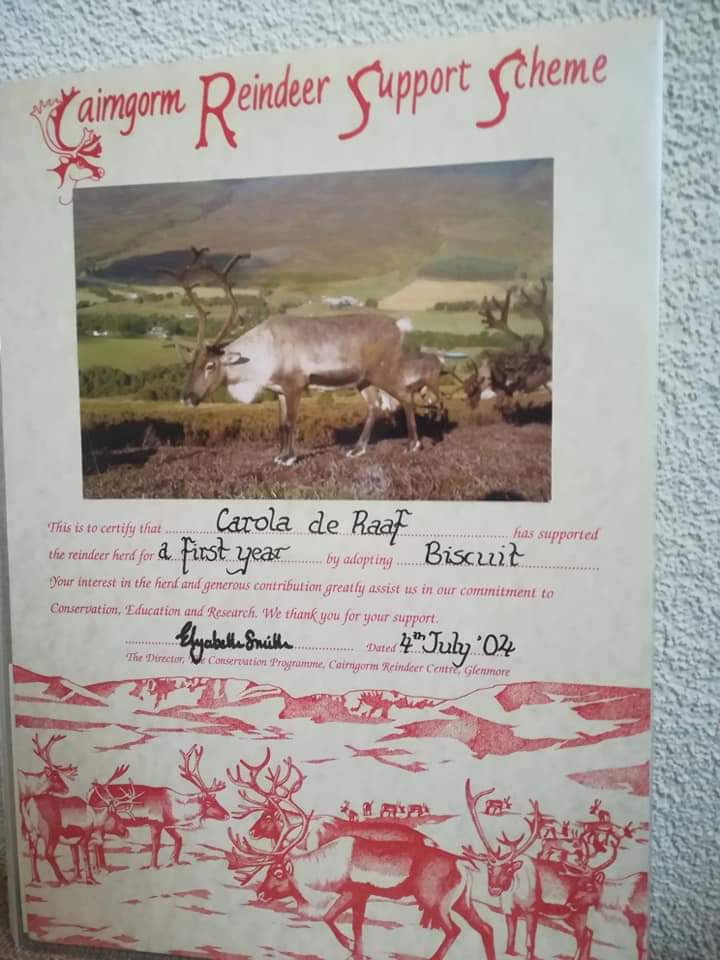
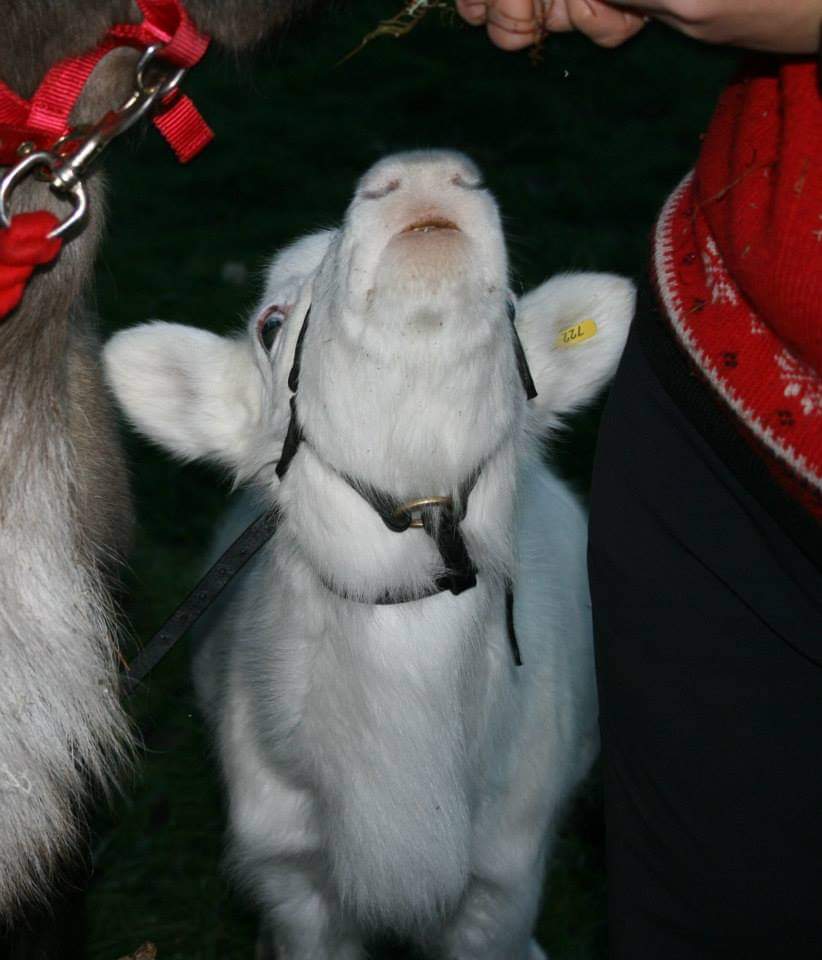
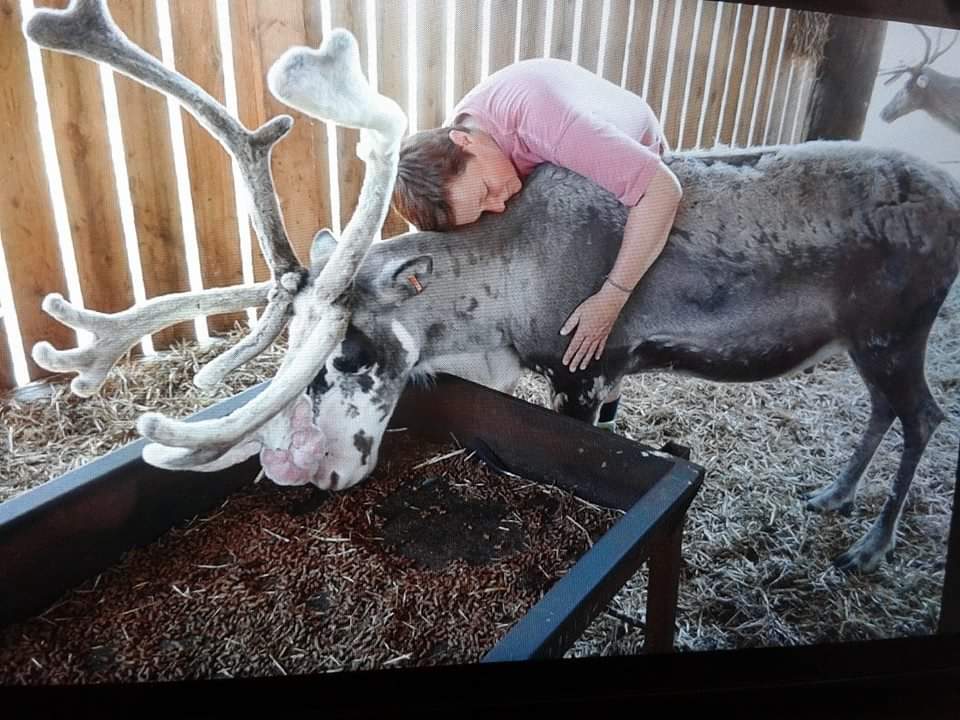
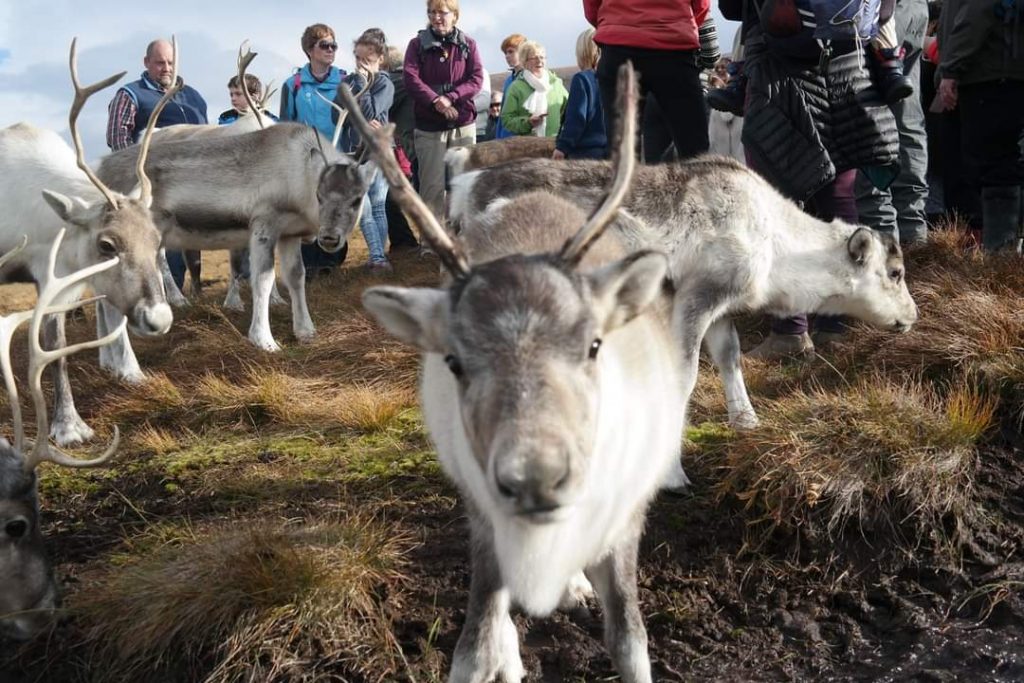
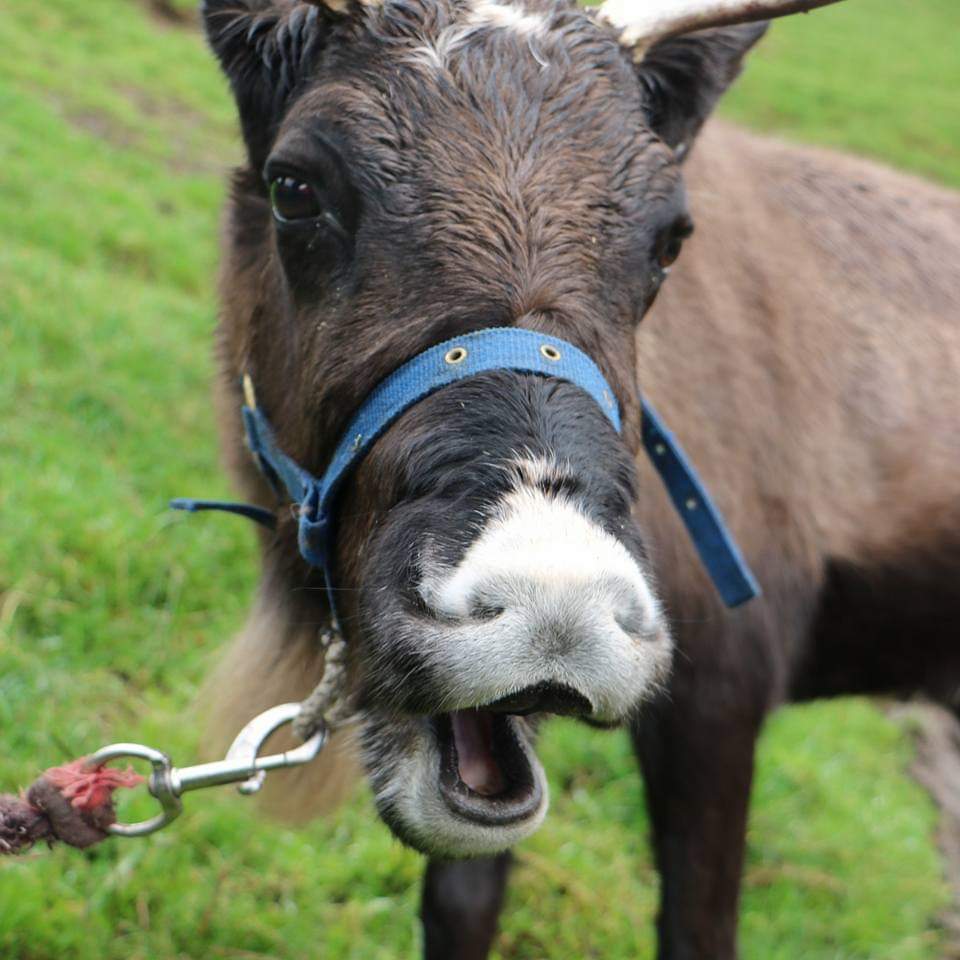
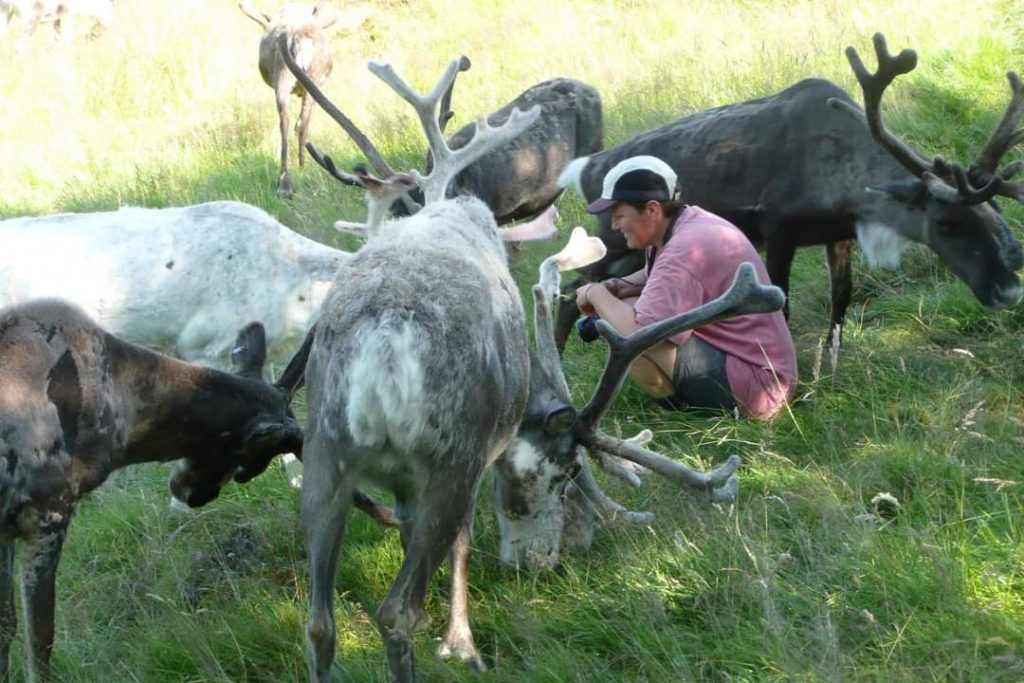
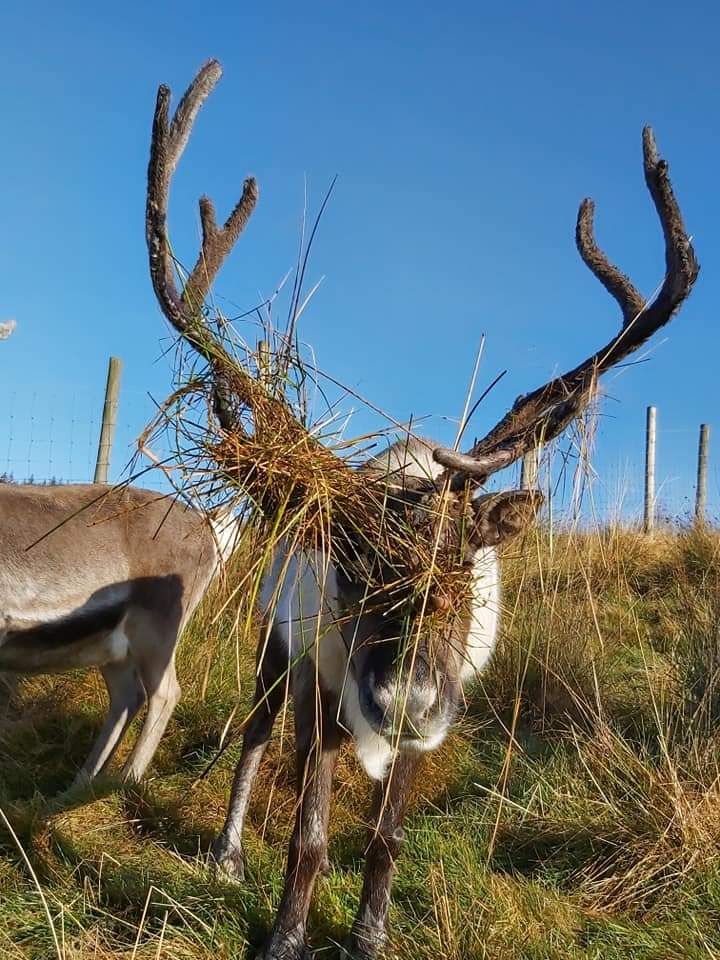
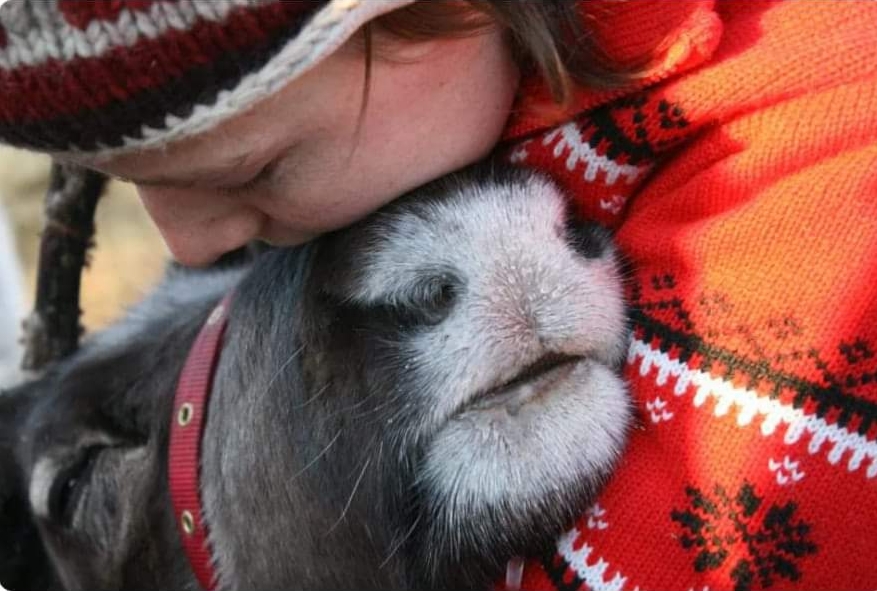
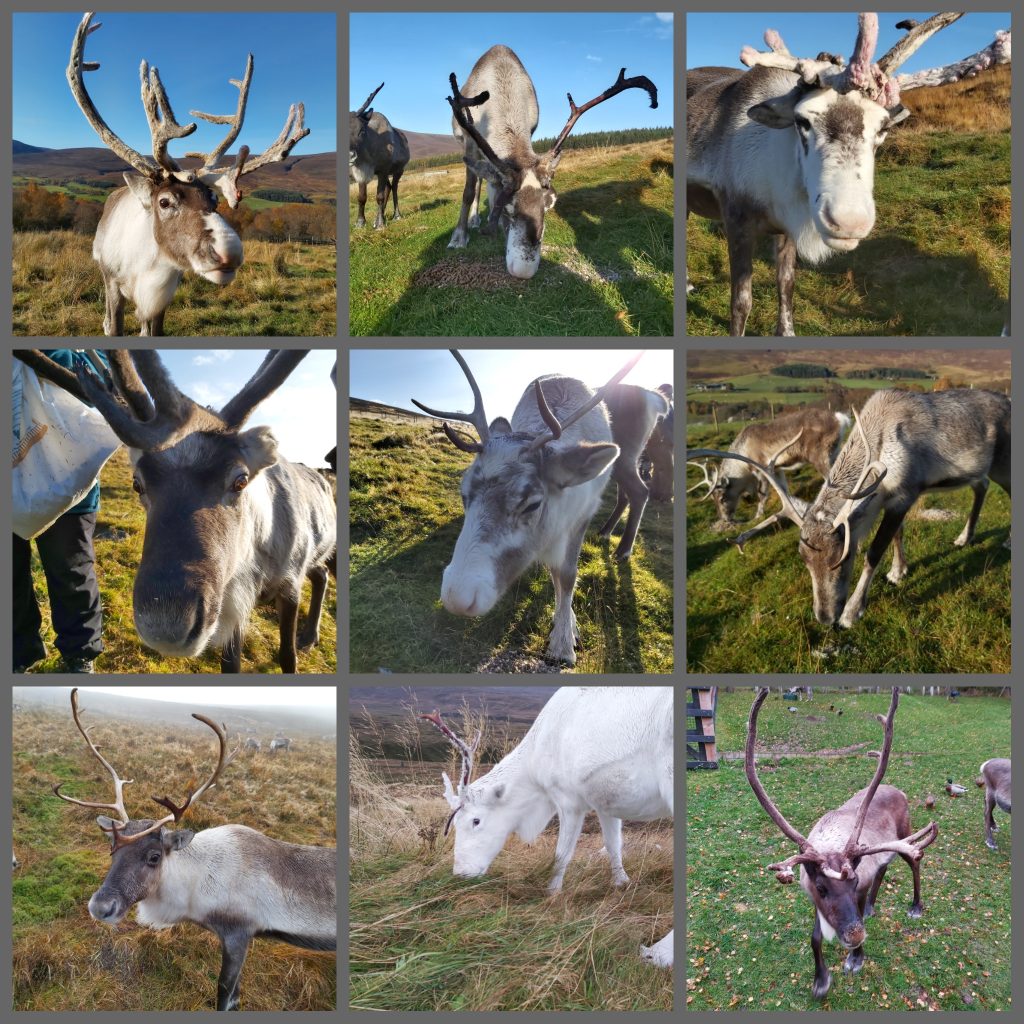

Roaming freely since 1952










Other than the few reindeer still out free-ranging who I haven’t seen lately, I’ve otherwise managed to get nice ‘adopt’ photos of everyone in the herd in the last few weeks. These photos are to go on the certificates that go out to all the lovely people who support us by adopting a reindeer, and as autumn is when reindeer look at their best, it is therefore when I take all the photos.
I realise (after sitting down to write this) that I’ve actually written a blog about photos before (to be fair, that was 5 years ago and I have a rubbish memory at times…) but hey, what’s wrong with repetition?! But actually I thought I’d just show you some of the ‘outtake’ photos, ‘cos everyone likes to see photos of reindeer looking daft, don’t they?
Most photos that don’t make the grade are just because of open mouths or closed eyes:
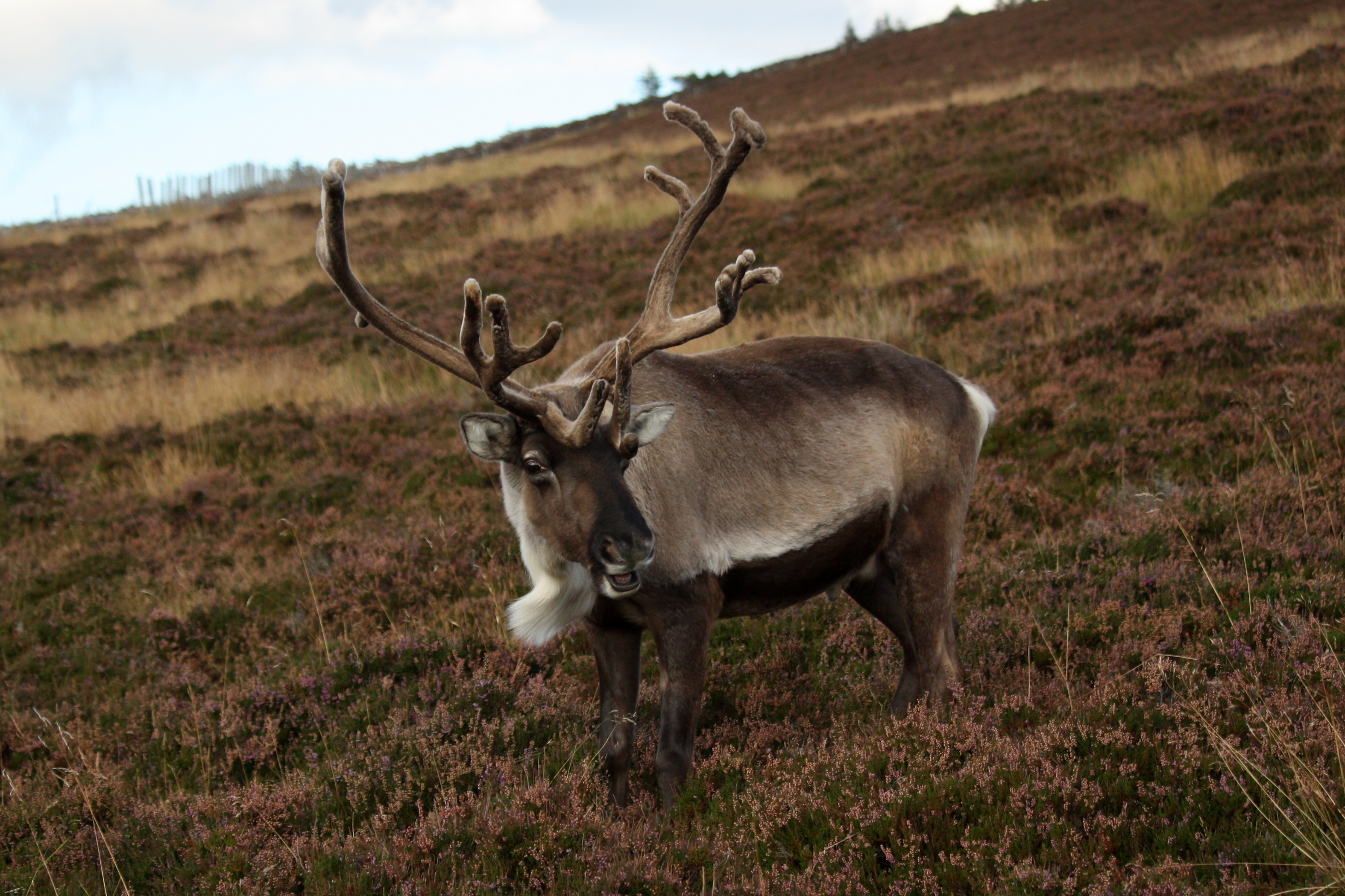
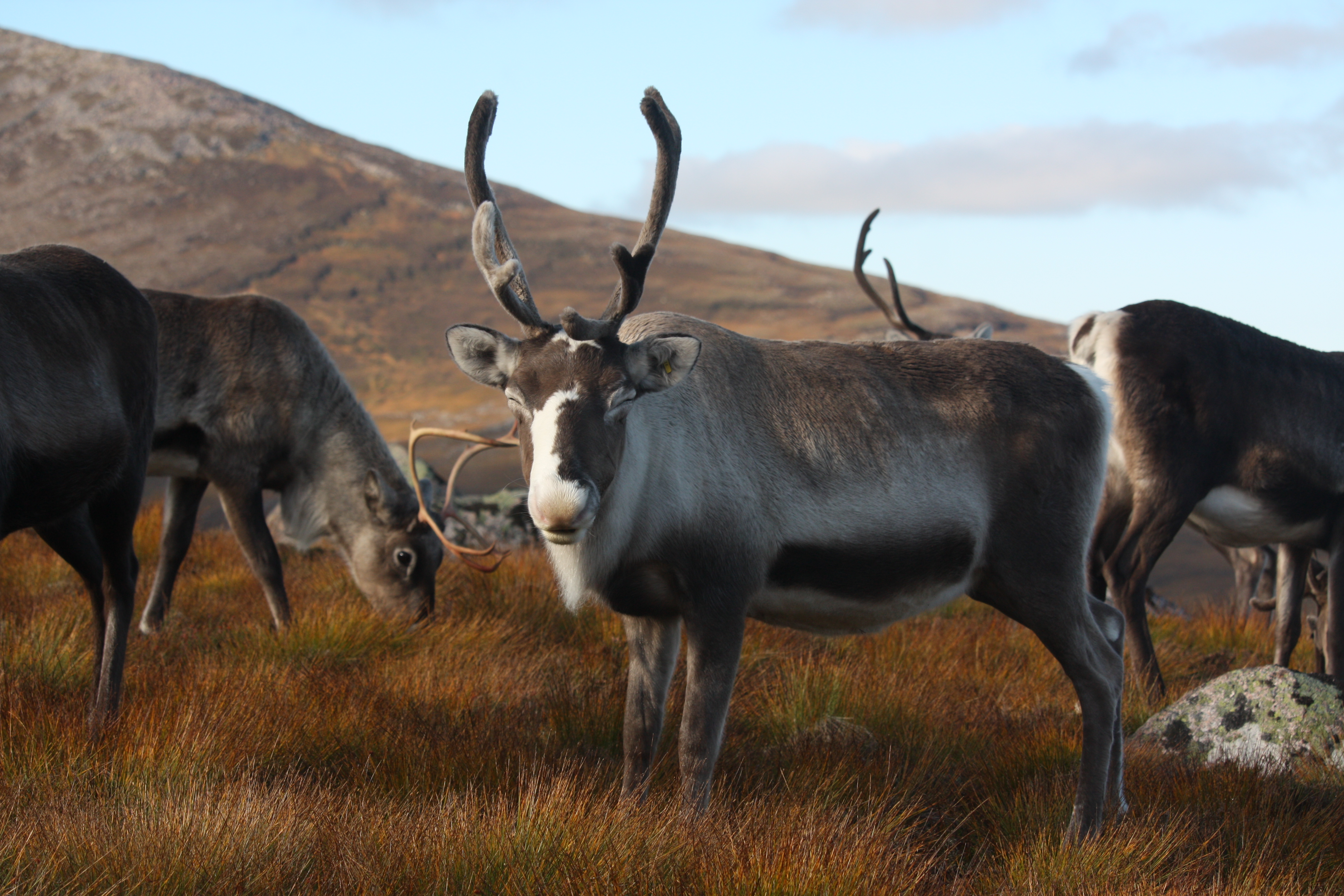

But after my trip over to our farm last month to photograph the reindeer there, I realised that I’d mainly just taken photos of Olympic looking ridiculous!



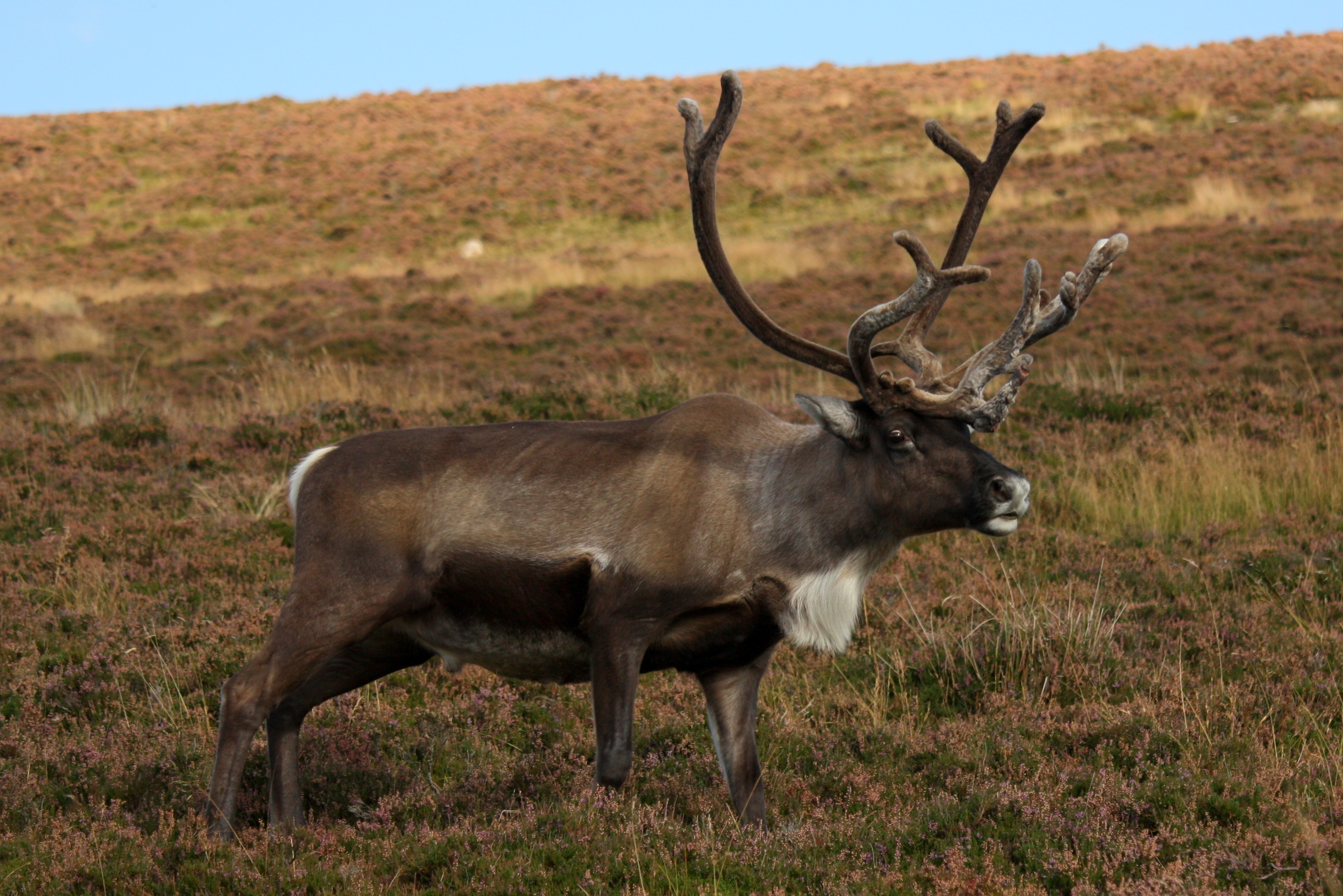
Then there’s just the odd ones:
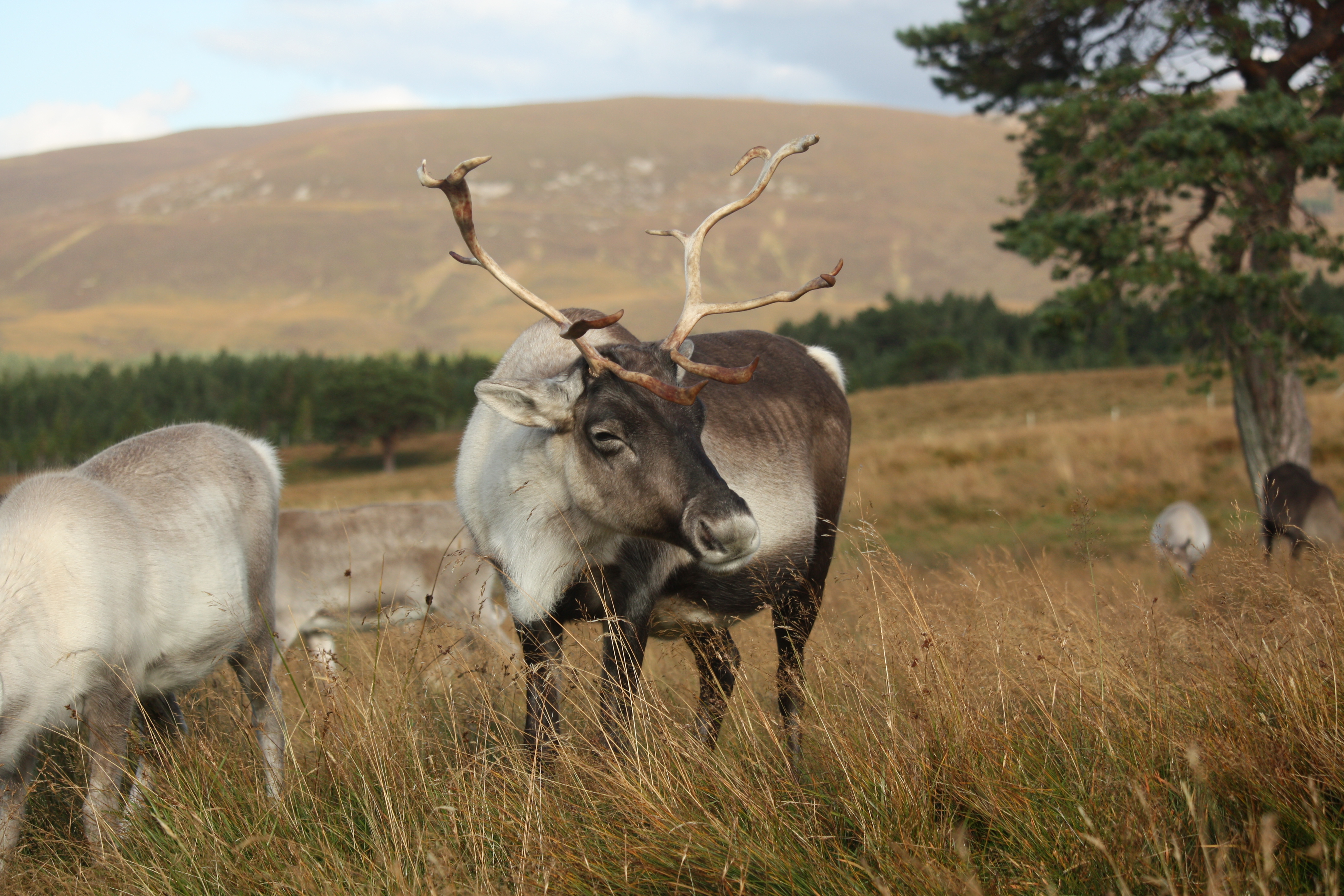

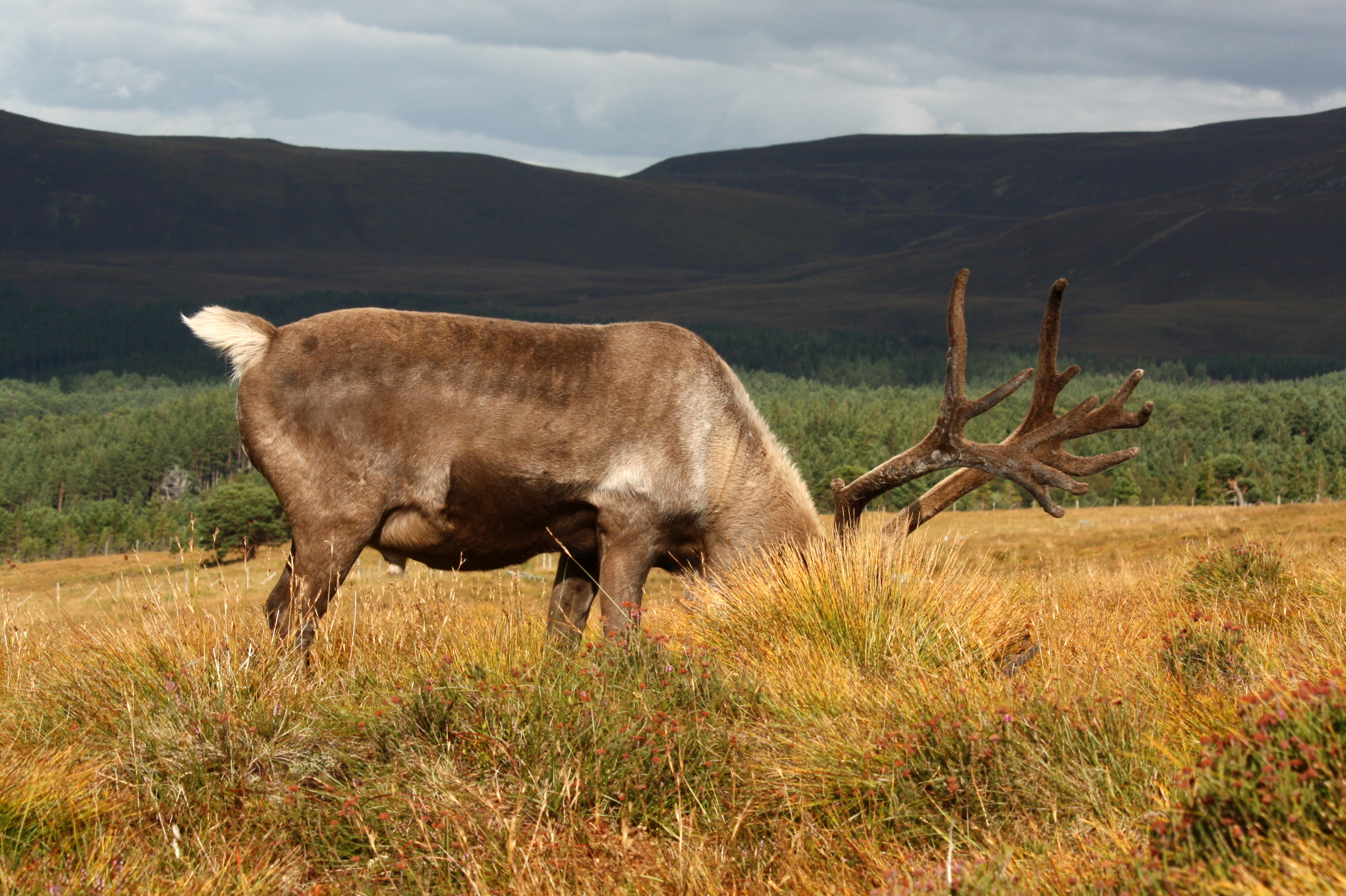
Reindeer often need encouragement to look alert for their photo, with ears pricked. This results in my photography assistant (Andi) doing a lot of dancing in the background while making a lot of noise, or sprinting back and forth shaking a feed bag…
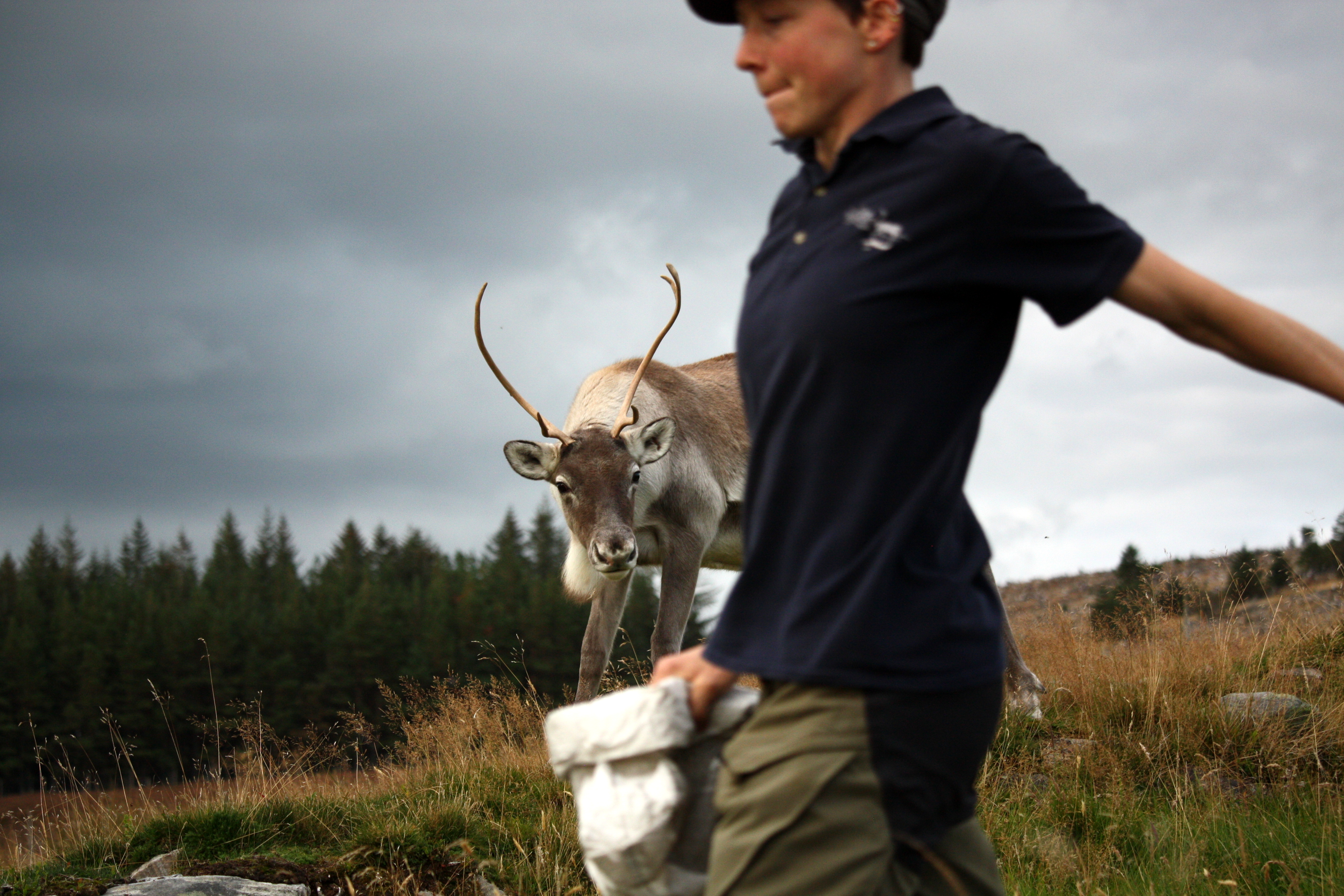
And sometimes we resort to throwing things at the reindeer (well, nearby anyway) to get their attention!
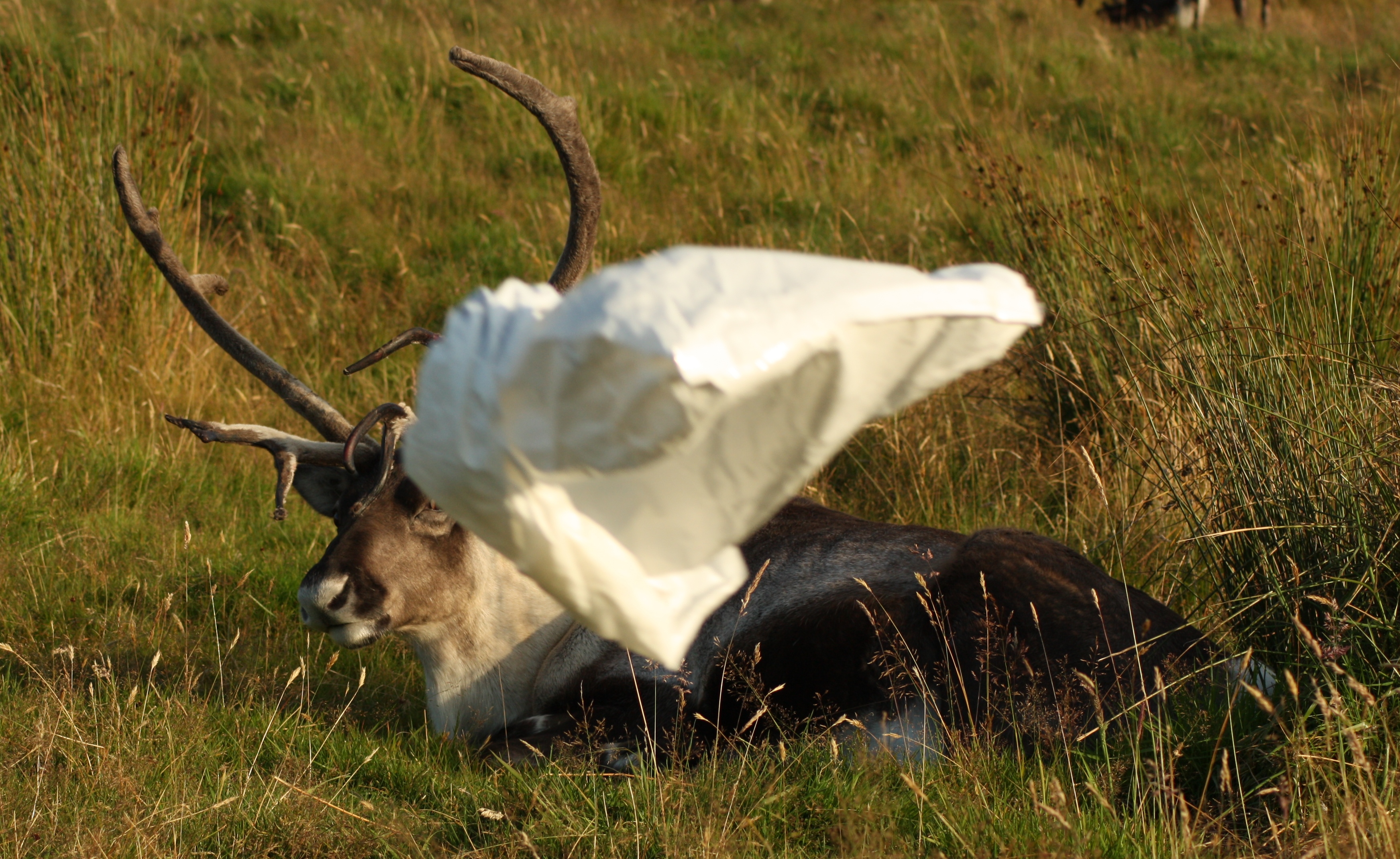
Most of the time it seems, this is what the reindeer think of me and my camera!
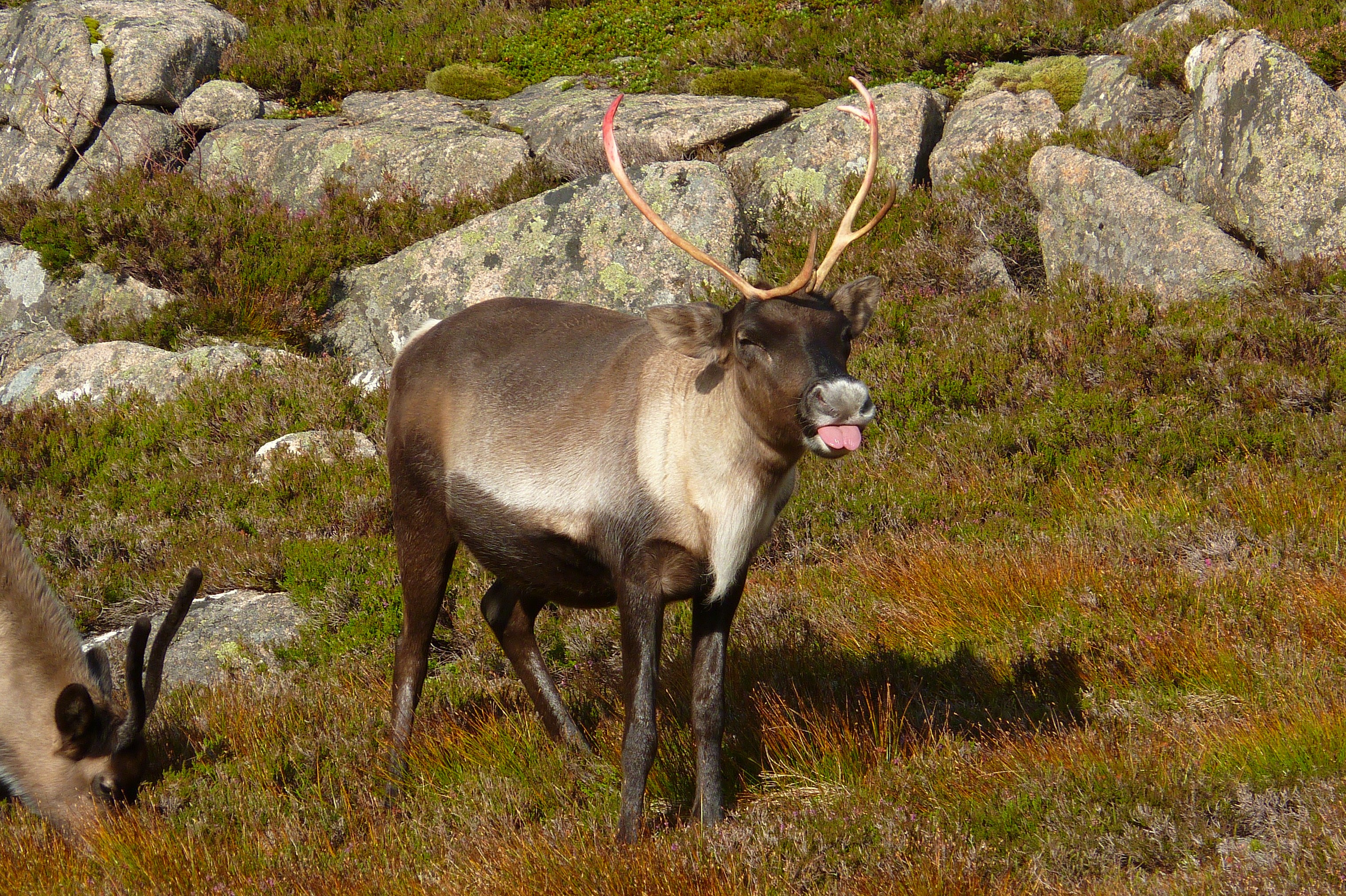
Hen
I imagine that there might be quite a few ‘newbies’ to the reindeer herd and to our social media pages just now, being as Christmas is the busiest time of year for our reindeer adoption scheme. Several hundred people will have had an A4 white envelope under their tree on Christmas morning last month, with a brand new, shiny reindeer adoption tucked inside. Hopefully some of those people have since tracked us down online to see what on earth they’ve just become part of… I thought I’d write a little bit of an introduction to us, and primarily to the adoption scheme, to shed some light on what we’re all about. So if you’re ‘new’, then welcome!
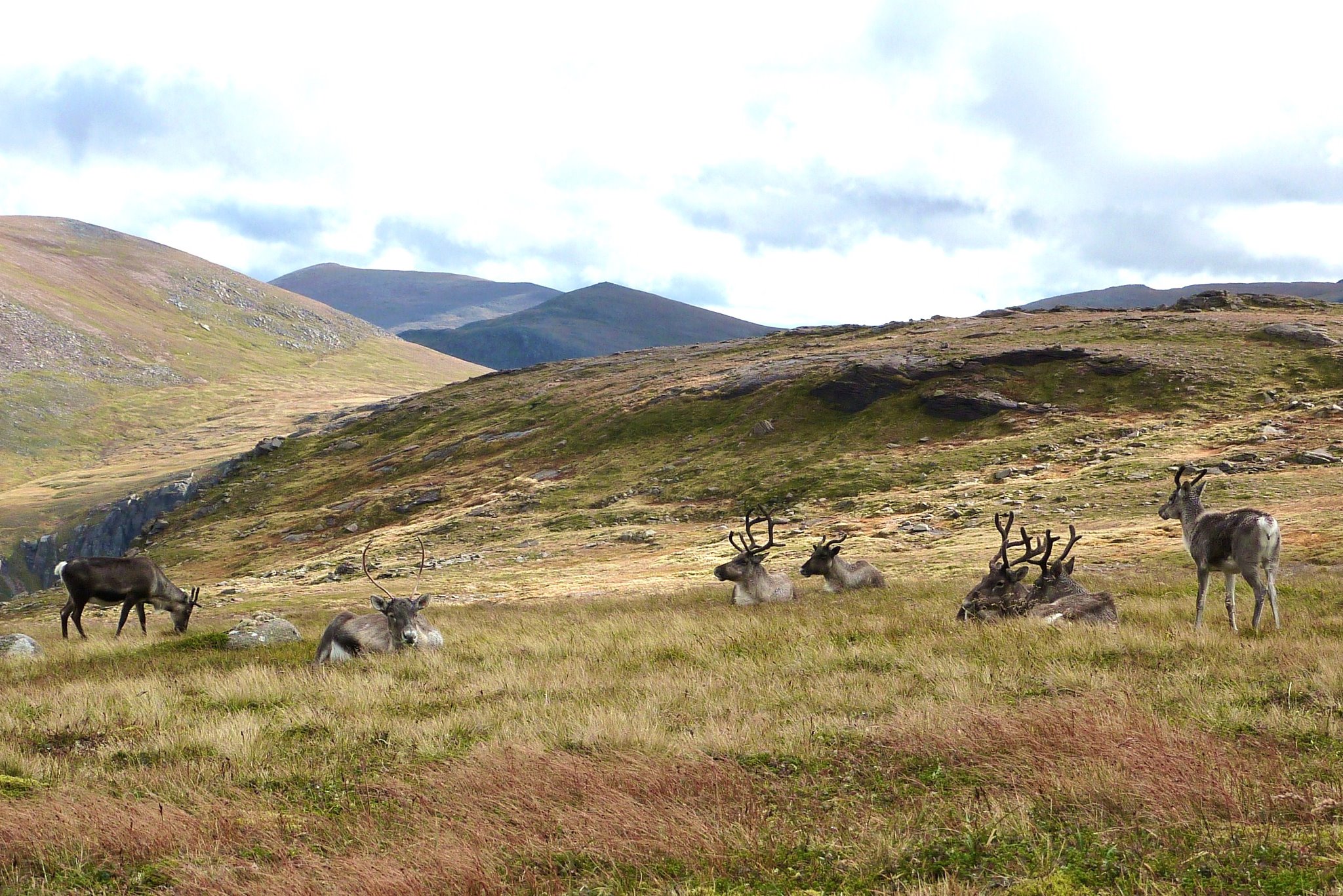
We have the only reindeer herd in the UK whose reindeer are in their natural habitat, and who spend at least some of each year living out on the mountains in complete freedom, with no fences to be seen. Reindeer are native to the UK but died out here thousands of years ago, and our herd was re-introduced from northern Sweden in 1952. We’ve been running guided walks out to see and feed them on the hill ever since.
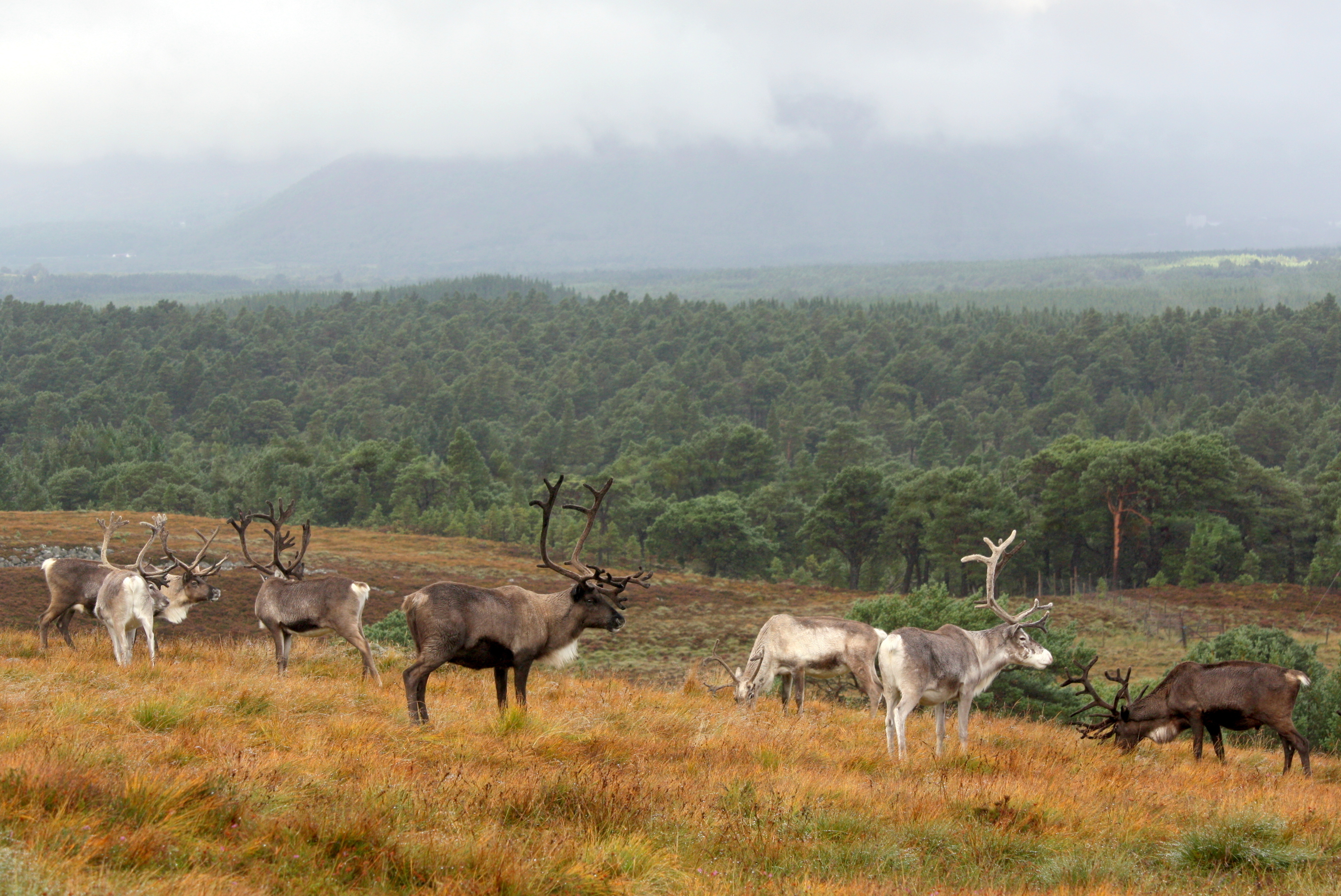
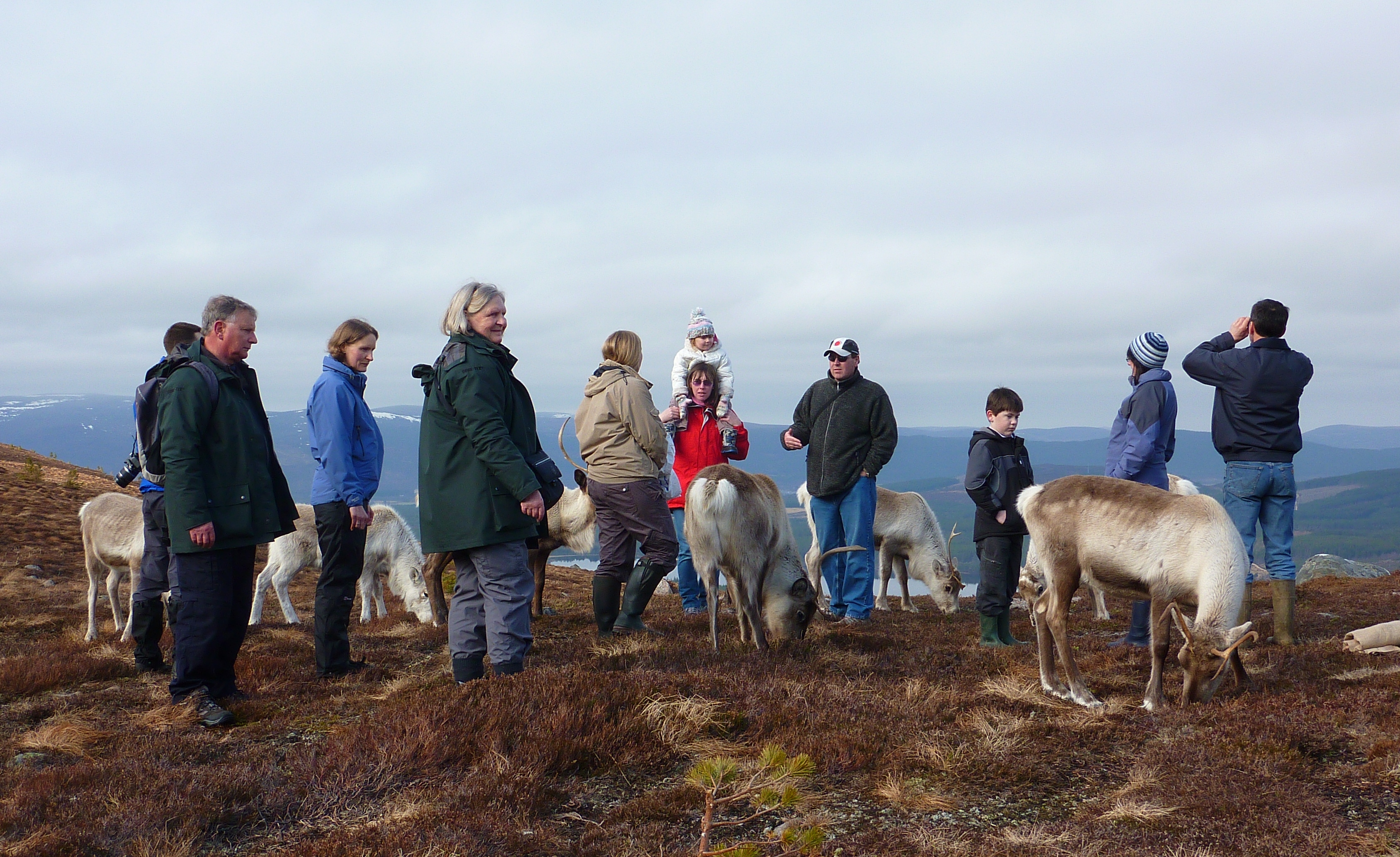
Guided walks form a large part of our income, directly supporting the management of the herd, but we have several other ways of earning money too – one of the main ones being the Support Scheme, the income from which is all ploughed back into the upkeep of the herd. This was started in 1990, and I see from our database records that we still have two adoptions that were originally set up in 1990 which are still going today, in their 30th years! We have about 1200 adopters in total just now, having had over 9000 adoptions in total over the years.
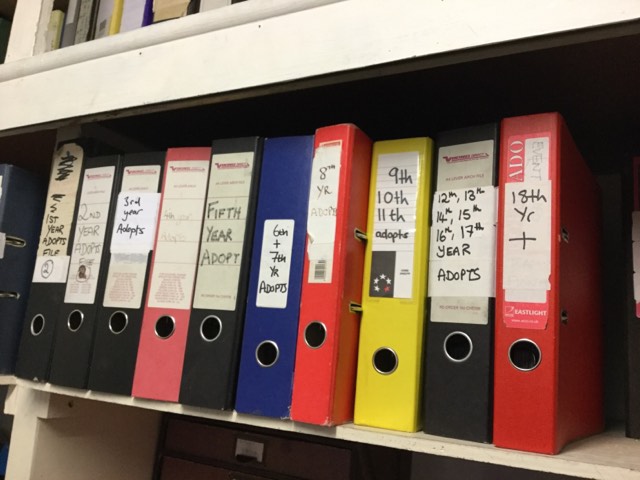
I think the biggest appeal of our adoption scheme, in comparison to those available for other animals, is that we still hand-write the majority of our correspondence to our adopters. No printed packs pulled off shelves and ready to go for us… Maybe it makes it a bit less ‘professional’ but I feel it’s so much more personal, and there can be very few animal adopters in the UK who receive a personal letter direct from the people who look after ‘their’ adoptee (complete with spelling mistakes and the likes!). A generic typed letter must be so much more the standard nowadays. Perhaps we’re just old-fashioned here at Reindeer House.
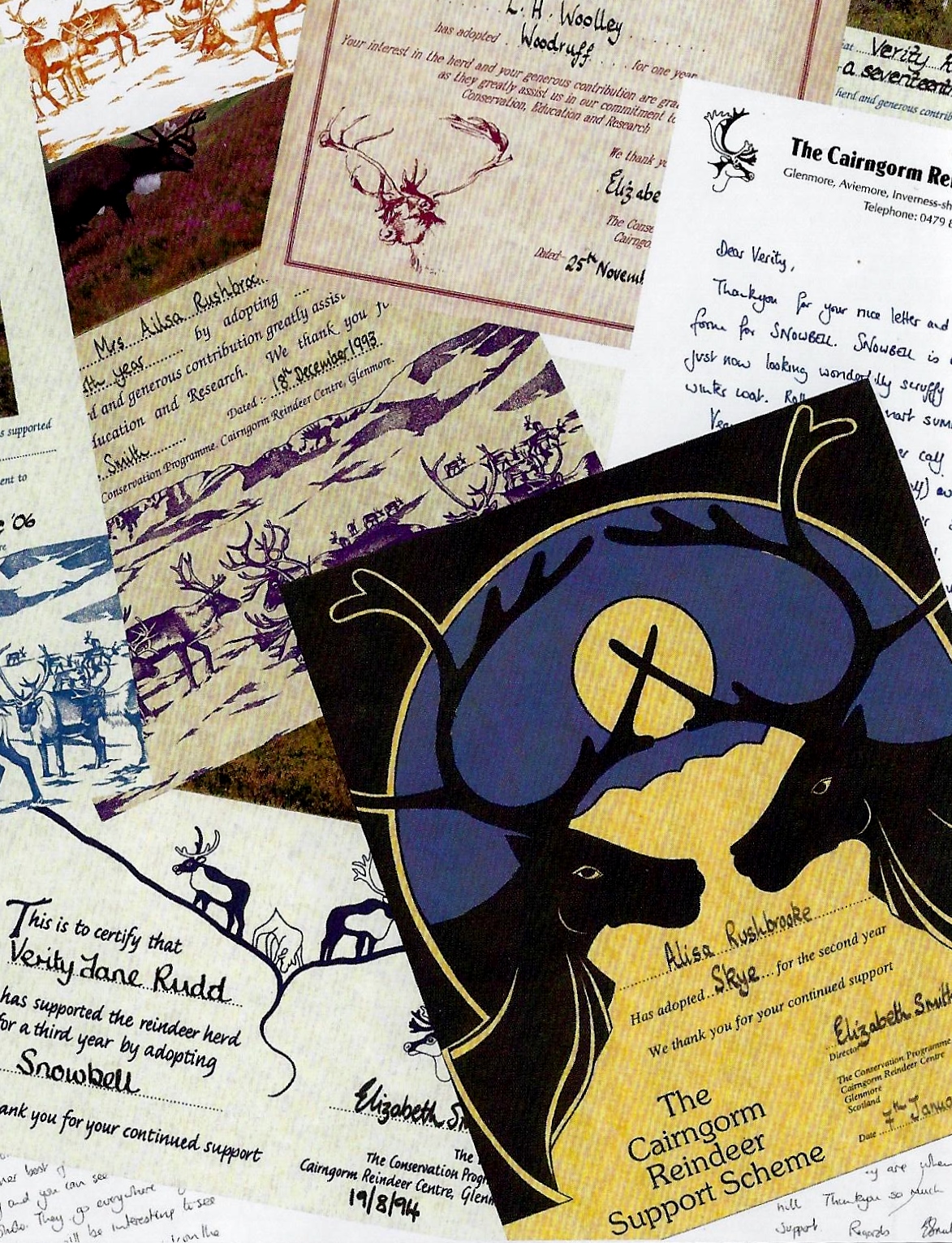
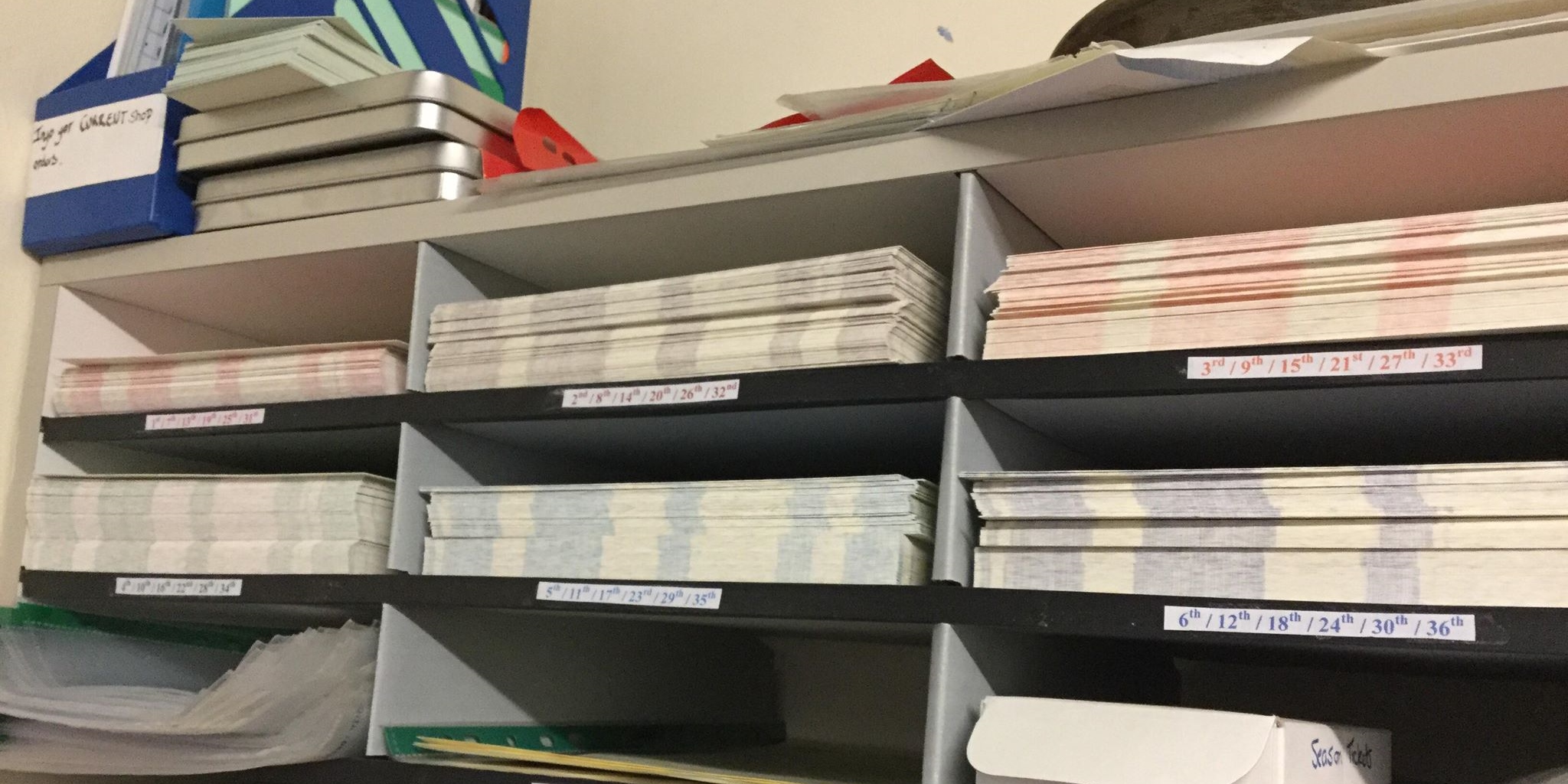
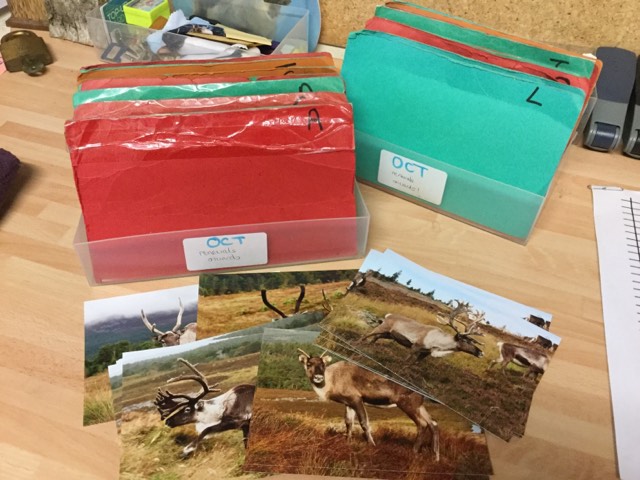
In the run up to Christmas, all hell breaks loose here in the office. Adoptions, both renewals and new ones, start pouring in and reindeer herding becomes a delicate balance of outdoor work, dealing with visitors, and frantically making up adoption packs. I liken them to a tide, at times threatening to overwhelm us and at times receding as we battle them under control. In November and December the tide never recedes for too long though, before returning with fury. There was a memorable Friday this Christmas just past when we started the day with 30 adoptions waiting to be made up, several of us then working at them pretty much all day, and finished the day with 45, as they came in faster than we completed them! Panic stations.
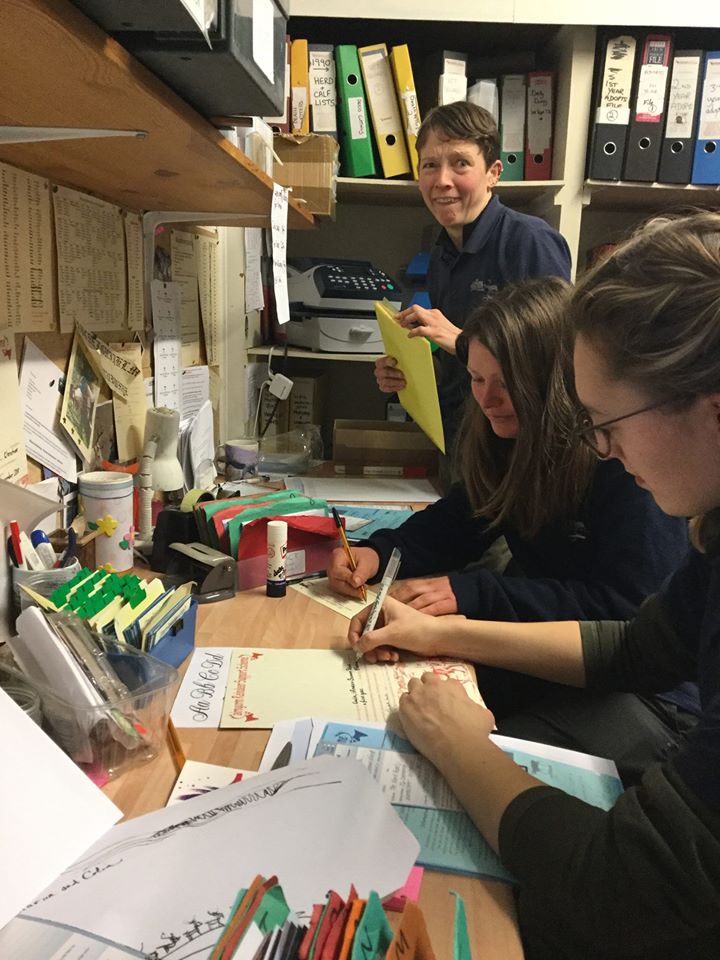
Along with the yearly adoption pack come the two newsletters, printed in June and October and posted out to everyone. By snail mail – we’ve not really got on board with the idea of emailing digital copies yet. Lots of our adopters are in the “mature” category too, many of whom don’t use email regularly. And to be honest, sometimes the old fashioned ways are much more straightforward – give me printed material over PDFs anyday. Don’t even get me started on whether direct debit is an option for renewing adoptions or not… (Our computers, and my brain, would melt.)
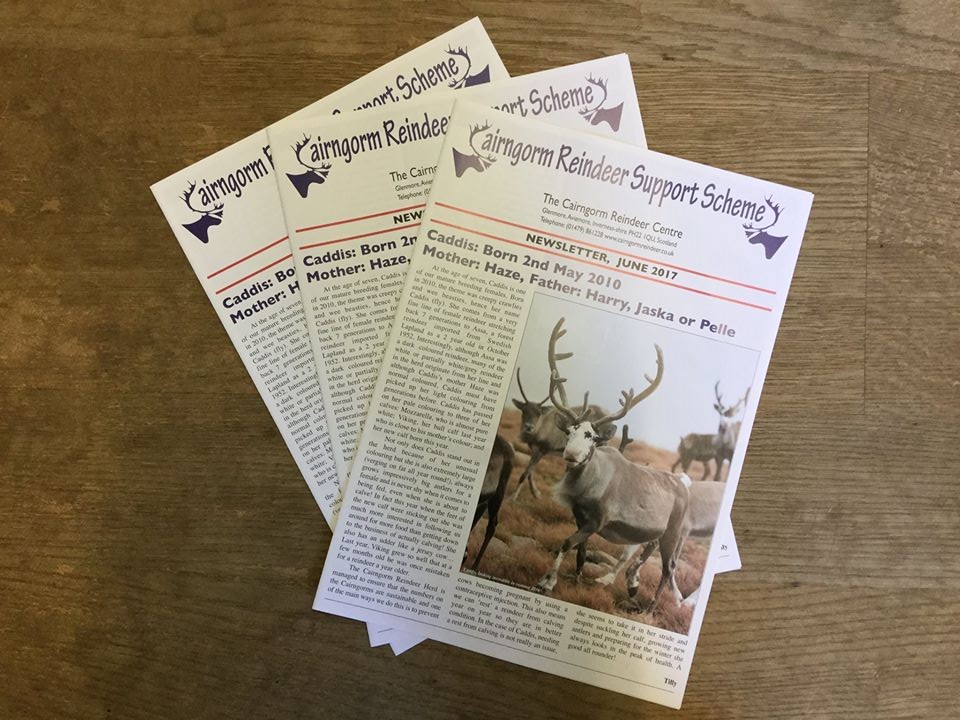
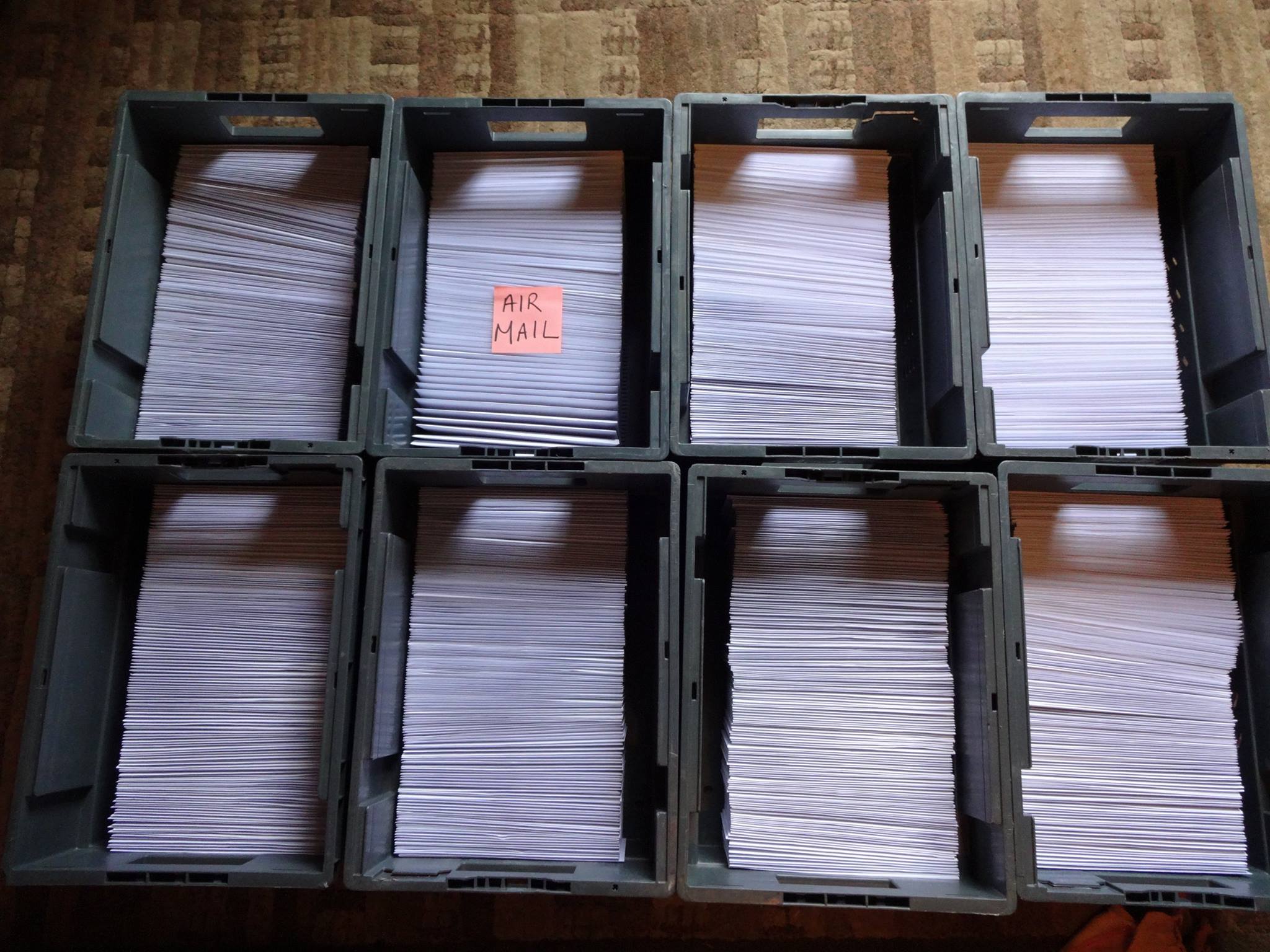
Along with the pack and the newsletters, adopters also get one free admission each time they visit. For some this is never, for some, multiple times a year. We also always do our best to ensure adopters get to meet their adoptee when they visit too if they give us advance warning of their visit, although this is not always possible depending on the time of year. Nothing beats the delight of hand-feeding your ‘own’ reindeer!
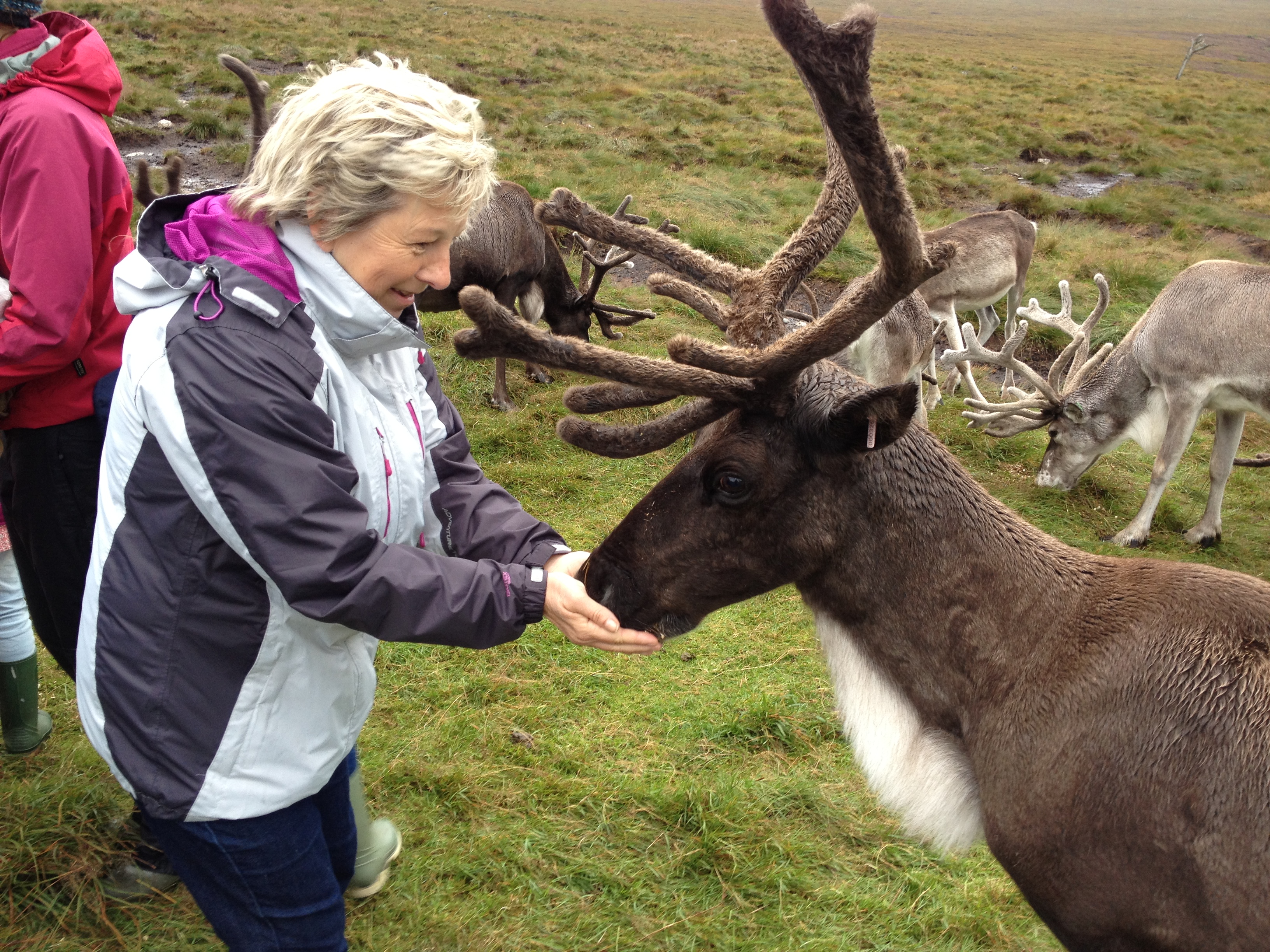
Many adopters have become very familiar faces to us now, and with the rise of social media, friendships have formed between adopters. On the subject of social media and the internet in general, gone are the days when adopters saw one sole photo of their reindeer per year. Now we do our best to be relatively active online, posting photos regularly and (no surprise here) blogs. A social media course told us a few years back that, as a business, we should be blogging regularly, so we started doing so every Friday, and have not missed a week yet. All hail the ability to ‘schedule’ blogs far in advance, meaning there’s not a last minute panic!
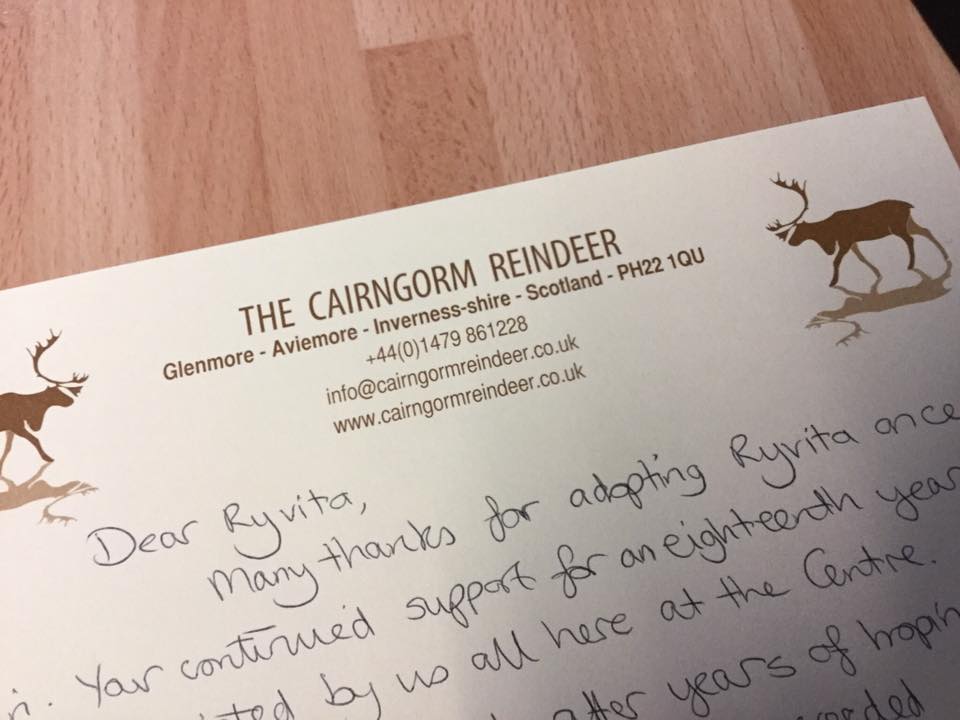
So thank you, each and every one of all you adopters! You help fund every aspect of the herd and the company (including paying our wages 😉 ) and enable it to be so successful, and your generous support is NEVER forgotten. And if this has whetted your appetite and reindeer adoption sounds like the thing for you, more details can be found on our website.
Here’s to the next 30 years of reindeer adoptions!
Hen
They say you should avoid filming with children and animals and there is no doubt that both can be unpredictable. However in the case of our reindeer I think there is an exception to the rule and whether we are filming with celebrities or for natural history our reindeer are always very amenable, willing and predictable. As long as there is a reward – food.
A couple of years ago we were approached by a TV company, Maramedia, with a view to filming our reindeer as part of a four part series on the natural world of the Highlands – Scotland’s Wild Heart. We were really pleased to be considered as part of the Highland fauna because our reindeer are a re-introduced species to Scotland and so ‘purists’ may feel reindeer should not have been included. But the Cairngorm reindeer are truly living in their natural habitat and as the filming showed, highly adapted to the Cairngorms, Britain’s only arctic environment.
The film crew decided to focus on our reindeer in the autumn and winter, seasons when reindeer are looking at their very best. The rutting season in autumn is always a spectacular affair and every year we have a number of breeding bulls who sometimes ‘fight it out’ to decide who will be ‘top dog’.
In 2014 the two main bulls were Bovril and Gandi and they were very evenly matched. They were also quite different colouring and so in the narration Ewan McGregor referred to them as the pale bull ( Gandi ) and the dark bull ( Bovril ). It made me smile because it sounded like something out of a western!

When reindeer bulls fight it is head on and locked antlers and a trial of strength, a bit like arm wrestling but with more action! Size, strength and experience (which comes with age) all come into the equation.
The film crew then returned a few more times over the winter to film reindeer living in arctic conditions. Of course reindeer are past masters at this and a bed of snow is extremely comfortable for a reindeer, who have such a dense insulating coat they don’t even melt the snow they are lying on! At a preview night where the makers of the series showcased the series to a local audience the camera man who came to film mentioned it was the coldest he had been when filming the reindeer in winter. He should have had a reindeer coat on.
Tilly

We currently have the beautiful book which accompanies the Highlands: Scotland’s Wild Heart series in stock in our shop. You can pop into the shop in Glenmore and pick it up for only £25, or order by emailing or telephoning us here at the Centre. P+P on request.
So there is often great confusion over what reindeer like to nom on and if you ever find yourself in that special situation where your dinner date is a reindeer we would hate for you to be unprepared!
The key to any nice dinner is of course a nice accompanying beverage; reindeer love fresh water from a mountain burn or pool… or even an upland lochan – they turn up their noses at tap water so that’s a big no no, I’ve seen reindeer lap up rain droplets up instead of lowering themselves to drinking the tap water we provide them on Christmas events!
As you guys all know by now from reading all our previous reindeer centric blogs, reindeer themselves are an arctic animal so they like their salad with a northern twist! These guys need arctic/sub-arctic habitat and plants to have happy tummies (think actimel for reindeer!)
Reindeer LOVE lichen… I mean L.O.V.E lichen! Although partial to a bit of tree lichen (you could add it in for flair!) the mainstay for the reindeer are ground growing lichens, they are the only animal excepting gastropods (snails/slugs) to have evolved the digestive enzyme to break down lichen.

Lichen is the main source of food for reindeer in the winter when the rest of the grazing has died back for the year and forms springy carpets at the bases of heathers and sedges up on the mountains here. However, interestingly enough lichen contains barely enough nutrients and energy to sustain a gnat let alone a reindeer. Thus in the winter the reindeer very cleverly slow their metabolism right down and the young stop growing – being a reindeer is very much a feast and famine business.
NB. It may be best to plan a summer dinner with your chosen reindeer.
The summer diet is much more varied, it’ll make for a multi-course experience! Once spring hits, the mountains turn green and all the lush grazing once again unfurls. Reindeer will eat almost anything montane, chewy and fibrous (reindeer have adapted to live off low nutrient arctic plants) – there is a common misconception that a lovely field of grass would float their boats but in actual fact it would be the equivalent of us living off a complete diet of clotted cream and would end in some unhappy digestive systems!

Reindeer will graze on an array of montane sedges and heathers as well as leafier vegetation such as birch and blaeberry (wild blueberry) leaves in the summer months. In the autumn reindeer will do anything for a wild mushroom; their digestive system allows them to eat even the super poisonous Fly agaric mushroom, however mushrooms often = drunk reindeer which is more than hilarious!
Reindeer will also eat some rather unusual things to gain nutrients if they are lacking, such as cast antler bone (full of great minerals!) as well as the velvet skin they shed from their antlers in the late summer – yum! We have ascertained that while they will eat their own velvet, they draw the line at anyone else’s!


Whilst this is the mainstay of a natural reindeer diet, if you’ve visited us here you may know we provide a supplementary feed for the reindeer for several reasons – reindeer are greedy and it ensures we have a lovely visit, we give them a wee bit of a helping hand at times of year when grazing is scarce and finally for half the year we use a 1200 acre enclosure and providing a supplement mix ensures all of our yummy natural grazing can re-grow.
First things first if you’re going to make a mix for your reindeer you’ll need to acquire a cement mixer. It is the sure fire way to make a yummy and well mixed batch, your dinner won’t go well if items are poorly distributed! We like to mix with a tonne of hay-mix (chopped up hay) which is covered in garlic molasses. The garlic is great for the digestive system but it does mean us herders have a garlicy scent most of the time. It can be a very lonely existence this reindeer herding! Next a splash of barley and sugar-beet alongside a general sheep feed full of good grains and our last ingredient is rather special. It’s called dark grains and looks pretty boring BUT is by far the coolest thing in the mix.

It’s a by-product of alcohol distilling (malt whisky production), obtained by drying solid residues of fermented grain to which certain solubles (pot ale syrup or evaporated spent wash) have been added. Unfortunately all the alcohol is all gone by this stage and the dark grains themselves are rather bitter so maybe mix them in well!
One final word of wisdom if you want to posh up your dinner is to sneak some seaweed in there – we discovered the reindeer loved the stuff after it was used to fertilize a patch of tree saplings and they ate it all. It’s now something we regularly provide for the reindeer in our paddocks and enclosure over the summer months.
We wish you the best of luck and hope if you ever have a reindeer date dilemma we’ve provided some key tips to a great evening or you!

Abby
Newsletters. The very word strikes alarm into the heart of a reindeer herder. Twice a year, our very outdoorsy, active job becomes a little more office bound for a few days, as we frantically scrabble to prepare, write, and compile about 3000 words into a comprehensible piece of A3, and then mail it out to our supporters of the herd, each of whom ‘adopts’ one of our reindeer. Or more than one, and in the case of one particular adopter (you know who you are…) – six!
We send out the newsletter twice a year, in late June and late October. The June one isn’t usually as fraught as the October one, which coincides with a hectic time of year for us: calf halter training, reindeer sleigh training, the run up to the Christmas tour and the October half term. Over time they have evolved from a single, black and white sheet to a glossy, double-sided and full colour affair. We always include info about each adopter’s particular reindeer in June, but over the years as the support scheme grew, this became too much for us to cope with in October and now we send a photo of the herd instead, with a little info on the back.

There’s no fancy computerised system for us though, we instead trawl through the filed adoption slips for each year of adopters, bit by bit double-checking the info on the form and the printed label is correct, and combining a newsletter with the correct photo or info slip – and then lots of envelope stuffing ensues! When I started working here, years ago, newsletter time seemed to go on for weeks, but now it is a matter of days, usually driven by panic by the amount of other work building up that is on hold. Newsletters come first for a few days! There always seems to be one envelope that floats around the office for a few extra days, with a scribbled post-it on it saying something like ‘can’t find form in folders!’, or ‘why isn’t this on the database!!!!’.

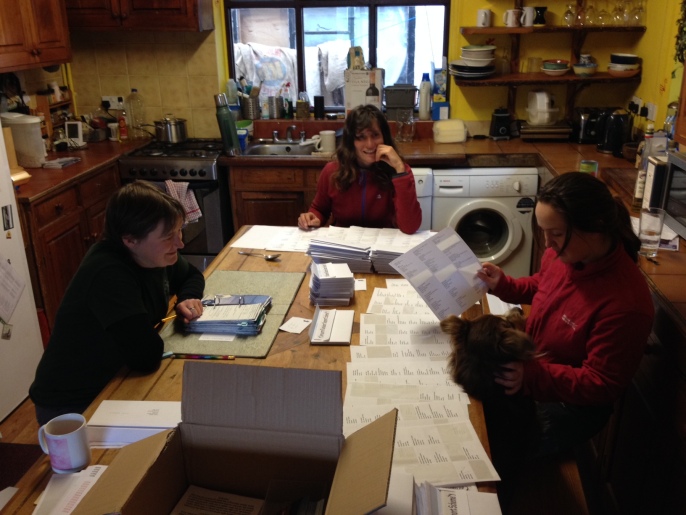

While we do our best to save paper and only send one newsletter to each person who adopts more than one reindeer, there’s no way for adoptions to be easily linked together, so it relies purely on the memory of person working their way through the filed forms, one by one. Many of us recognise most adopters’ names straight away, and the office talk will involve lots of ‘hang on, I think these guys adopt someone else too. Where’s their other form?!’. Often punctuated with ‘bugger, I forgot they adopted so-and-so too. It’s been posted already…’. So if you receive two separate newsletters in the post, bear with us, one day we’ll get it right! (and on that note – if you spot anything wrong with your address, do drop us an email so we can correct it!)
And then, finally, comes the mission of franking all 1000 plus envelopes. A mind numbing job, but quite soothing as the machine beeps away – known to us as ‘the franking song’. The beeping ditty is stuck in the head of the unfortunate herder tasked with this job for the rest of the day.

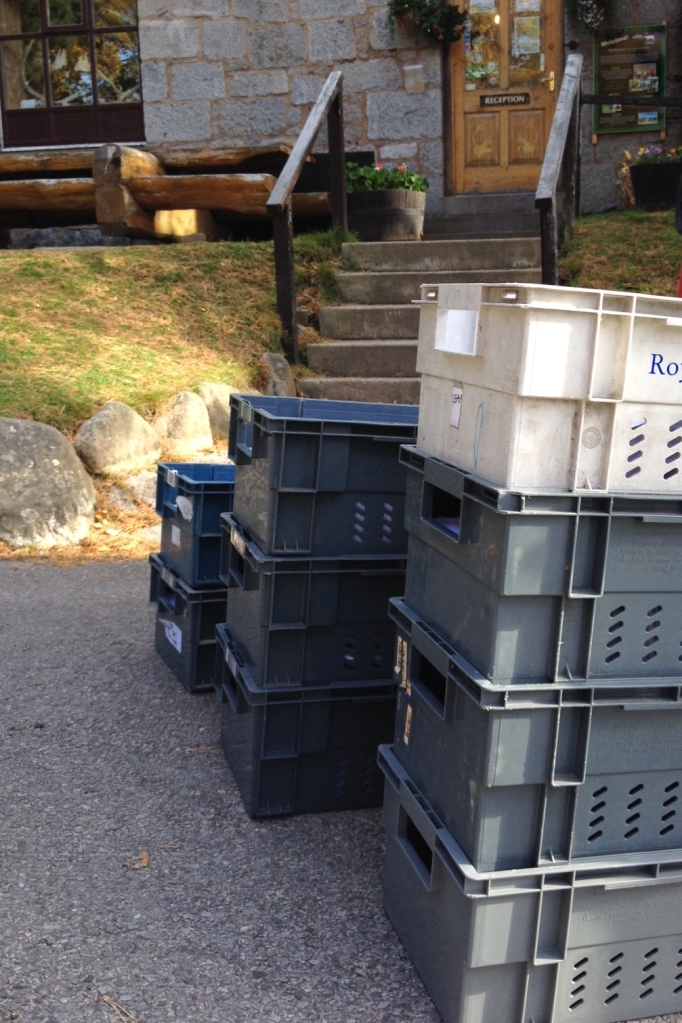
So hopefully by now (or within the next few days at least), you adopters out there should have your shiny new Oct 2015 newsletter in your hands. And if don’t adopt a reindeer, and want to get your paws on one of these hallowed pieces of literature (ha!), then there’s only one way to do so. Now, where’s that adoption form got to???
Hen
Each year, September and October become stressful months for me. Although the crazily busy summer season has passed and some sense of normality is returning to the slightly frazzled reindeer herders (shortly to be removed by the onset of the Christmas season, however), autumn is the season of ‘adopt photos’. This is my responsibility (although frequently assisted by Alex and all the other herders that I’ve begged…), so I spend my time armed with a camera and a sense of hopefulness that maybe, just maybe, the sun might come out…

We have been running our Support Scheme for over 25 years now and right from the beginning adopters of our reindeer have received a certificate annually, along with a recent photo of ‘their’ reindeer. Added to the issue of there being about 150 reindeer in the herd, is the problem that they free-range on the mountains a lot of the time and there is never any guarantee that they’ll be in the right place when I need to get that elusive photo. Having been here for years now, I know the details of our adoption database well, and I frequently have a constant niggling worry that I know so-and-so’s adoption renewal form of a particular reindeer is going to crash onto our mat any day, and I STILL haven’t got ‘the photo’…

Reindeer don’t always lend themselves to being easy photo subjects. They spend a large part of the summer being incredibly scruffy as they moult their winter coat, and then part of the winter (ranging from one to several months) with no antlers, having cast their old set. Nobody really wants a photo of a bald reindeer (except, perhaps, adopters of Malawi, who actually is bald, having never grown an antler in her life). I need the weather to co-operate too as cameras and rain don’t mix well, as everyone knows, and this is often one of my main obstacles.
Reindeer look at their absolute best in September and October, with full grown antlers and fresh, thick winter coats. So, this is the season that I aim to get a complete set of photos of every single reindeer, to use for the majority of the next year. I then try and get ‘back-up’ photos in Jan/Feb, to use in the late summer to avoid any possible overlap of photos for the adopters whose renewals are due around that time. Older reindeer don’t change much in appearance from year to year (other than the moulting/antler issue), but the young ones do as they grow, so they usually need more regular photos too.

The natural stance of a relaxed reindeer doesn’t help either, heads down, ears out sideways, somewhat glazed look. If you receive a photo of your reindeer with its head up, ears pricked and an alert look, bear in mind that at the moment I pressed the shutter I probably had another herder dancing around nearby like a nutcase, barking like a dog, or throwing a feed bag in the air! In moments of desperation I have been known to throw the empty feedbag at the reindeer… Unfortunately (for me anyway), the tamest and friendliest reindeer are the most adopted ones, and are always the most difficult to generate a response from. Naming no names. Well, Puddock. Paintpot. Beastie… It’s a well-known and frustrating rule of mine that I always take the nicest photos of shy, un-adopted reindeer.

However, each photo is filed in our photo archive, so whether they have been used on a certificate or not, they still provide a visual record of a reindeer’s life through its various stages. But regardless, one of the highlights of my year (maybe I should try getting out more) is that glorious moment when I press ‘confirm’ on the online order in the autumn, and sit back knowing that in a few days 1000+ shiny photos will arrive and can be filed, awaiting the flood of adoptions over the coming months. Huge sigh of relief!
Hen